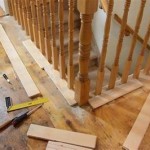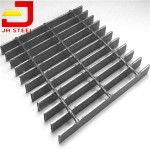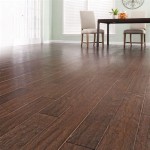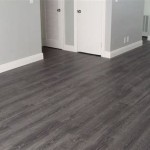Rustic Pine Flooring: A Timeless Choice for Interior Design
Rustic pine flooring represents a popular material selection for homeowners and designers striving to achieve a warm, inviting, and character-rich aesthetic in their living spaces. Distinguished by its natural variations, knots, and grain patterns, rustic pine offers a unique blend of durability, affordability, and aesthetic appeal that distinguishes it from other types of wood flooring. Its widespread utilization in both residential and commercial settings reflects its versatility and enduring popularity.
Understanding the nuances of rustic pine flooring, including its characteristics, advantages, installation, and maintenance, is crucial for making an informed decision for its application in a project. This article investigates these aspects, providing a comprehensive overview for both potential buyers and professionals in the construction and design industries.
Defining Rustic Pine: Characteristics and Visual Appeal
The term "rustic pine" generally encompasses pine wood that exhibits natural imperfections and features that are often considered undesirable in more refined or contemporary flooring styles. These features, however, are precisely what contribute to its distinct character and visual appeal. Key characteristics that define rustic pine flooring include:
Knots: Knots are a prominent feature in rustic pine, resulting from branches that were once part of the tree. These knots vary in size, shape, and color, adding visual interest and a sense of authenticity to the flooring. While some knots may be sound and stable, others might be loose or cracked, requiring stabilization during the manufacturing or installation process.
Grain Patterns: Pine wood naturally exhibits a distinctive grain pattern, characterized by alternating light and dark bands. In rustic pine, this grain pattern is often more pronounced and irregular compared to higher grades of pine. Variations in grain direction and width further enhance the natural appearance of the flooring.
Color Variations: Pine wood naturally ranges in color from pale yellow to creamy white, with occasional reddish or brownish hues. Rustic pine flooring typically exhibits a greater degree of color variation within individual planks and across the entire floor. This variation contributes to the flooring's overall warmth and visually dynamic appearance.
Texture: Rustic pine flooring often features a slightly rough or textured surface, resulting from the natural grain of the wood and the presence of knots and other imperfections. This texture provides a tactile element and can enhance the flooring's slip resistance.
These combined characteristics create a flooring surface that is more than just a functional element; it becomes a focal point, adding character and authenticity to the space. The visual appeal of rustic pine is often described as warm, inviting, and reminiscent of traditional or country-style interiors.
Advantages of Choosing Rustic Pine Flooring
Beyond its distinct aesthetics, rustic pine flooring offers a range of practical advantages that contribute to its widespread adoption. These advantages include:
Affordability: Compared to many other hardwood flooring options, such as oak, maple, or walnut, rustic pine is often a more budget-friendly choice. Pine trees are relatively fast-growing and readily available, which contributes to its lower cost. This affordability makes rustic pine an attractive option for homeowners seeking a natural wood floor without exceeding their budget.
Durability: While pine is generally considered a softer wood compared to some hardwoods, it can still provide adequate durability for residential use, especially in areas with moderate foot traffic or proper maintenance. Pine's inherent resin content also contributes to its resistance to moisture and insects. The durability of rustic pine can be enhanced by applying a durable finish and implementing regular cleaning practices.
Ease of Installation: Pine wood is relatively soft and easy to work with, making it simpler to cut, nail, and install compared to harder woods. This ease of installation can reduce labor costs for homeowners who choose to install the flooring themselves. The softness of the wood also means that it's easier to repair or replace damaged planks if necessary.
Versatility: Rustic pine flooring is versatile enough to complement a wide range of interior design styles, from traditional and farmhouse to modern and contemporary. Its natural warmth and texture can add character to minimalist spaces, while its rustic charm can enhance the coziness of more traditional settings. The flooring can also be stained or finished in a variety of colors to match specific design preferences.
Sustainable Choice: Pine is a renewable resource, and many pine forests are managed sustainably. Choosing rustic pine flooring made from sustainably harvested wood can contribute to environmentally responsible building practices. Furthermore, the use of natural materials like pine can create a more comfortable and healthy indoor environment.
These advantages collectively make rustic pine flooring a compelling option for those seeking a durable, affordable, and aesthetically pleasing flooring solution.
Installation and Maintenance Considerations
Proper installation and maintenance are crucial for ensuring the longevity and performance of rustic pine flooring. Certain considerations must be addressed during both phases to prevent problems and maintain the flooring's aesthetic appeal.
Acclimation: Before installation, the pine flooring must be acclimated to the environment in which it will be installed. This process involves allowing the wood to adjust to the temperature and humidity levels of the room, which helps to prevent warping, cupping, or gapping after installation. The acclimation period varies depending on the climate and the moisture content of the wood, but typically lasts for several days or even weeks.
Subfloor Preparation: A stable and level subfloor is essential for a successful flooring installation. Ensure that the subfloor is clean, dry, and free from any debris or imperfections. If the subfloor is uneven, it may need to be leveled with a self-leveling compound or by installing a plywood underlayment.
Installation Methods: Rustic pine flooring can be installed using various methods, including nailing, gluing, or floating. The choice of installation method depends on the type of flooring, the subfloor material, and the specific installation requirements. Nailing is a common method for solid wood flooring, while gluing is often used for engineered wood flooring. Floating floors are typically used for click-lock flooring systems.
Finishing: After installation, the flooring must be finished to protect it from wear and tear, moisture, and staining. Various types of finishes are available, including polyurethane, oil-based finishes, and water-based finishes. The choice of finish depends on the desired level of durability, gloss, and ease of maintenance. Consider the environmental impact of the finish when making a selection.
Regular Cleaning: Regular cleaning is essential for maintaining the appearance of rustic pine flooring. Sweep or vacuum the floor regularly to remove dirt, dust, and debris. Avoid using harsh chemicals or abrasive cleaners, as these can damage the finish. Use a damp mop with a mild soap solution to clean the floor as needed.
Preventive Measures: Several preventive measures can help to protect rustic pine flooring from damage. Use mats or rugs at entrances to trap dirt and moisture. Avoid wearing shoes with high heels or sharp edges on the flooring. Use furniture pads under the legs of furniture to prevent scratches and dents. Promptly clean up spills to prevent staining.
Addressing Imperfections: As a natural material, rustic pine flooring may develop imperfections over time, such as dents, scratches, or minor cracks. These imperfections can be considered part of the flooring's character and charm. However, if desired, they can be repaired using wood filler, sanding, or refinishing.
Professional Assistance: If uncertain about any aspect of installation or maintenance, consult with a qualified flooring contractor. Professional contractors have the knowledge, skills, and experience to ensure a successful installation and provide guidance on proper maintenance practices. They can also assist with repairs or refinishing as needed.
Adhering to these installation and maintenance considerations will contribute to the longevity and aesthetic appeal of rustic pine flooring, ensuring it remains a valued feature of the interior for many years.
Rustic pine flooring represents a compelling option for those seeking a flooring solution that combines natural beauty, durability, and affordability. Its characteristic knots, grain patterns, and color variations contribute to a warm and inviting aesthetic that complements a wide range of interior design styles. By understanding the advantages, installation requirements, and maintenance considerations associated with rustic pine flooring, prospective buyers can make informed decisions and ensure the long-term performance and aesthetic appeal of their flooring investment. The inherent characteristics of this material make it stand out in the world of flooring options.

Rustic Pine Flooring

Antique Pine Boardwalk Hardwood Floors

Rustic Knotty Pine Flooring Adds Warmth And Beauty

Rustic Heart Pine Flooring Longleaf Lumber

Beautiful Pine Floors How Our Gorgeous New Have Such Character The Morrow House Wood Flooring Farmhouse

Rustic Heart Pine Flooring Original Elmwood Reclaimed Timber

The Enduring Beauty Of Soft Eastern White Pine Flooring Carlisle Wide Plank Floors

Distressed Pine Flooring Sets The Backdrop For Italian Restaurant Carlisle Wide Plank Floors

Rustic Heart Pine Flooring Original Elmwood Reclaimed Timber

Engineered Rustic Pine Flooring Pre Finished Hardwood
Related Posts








